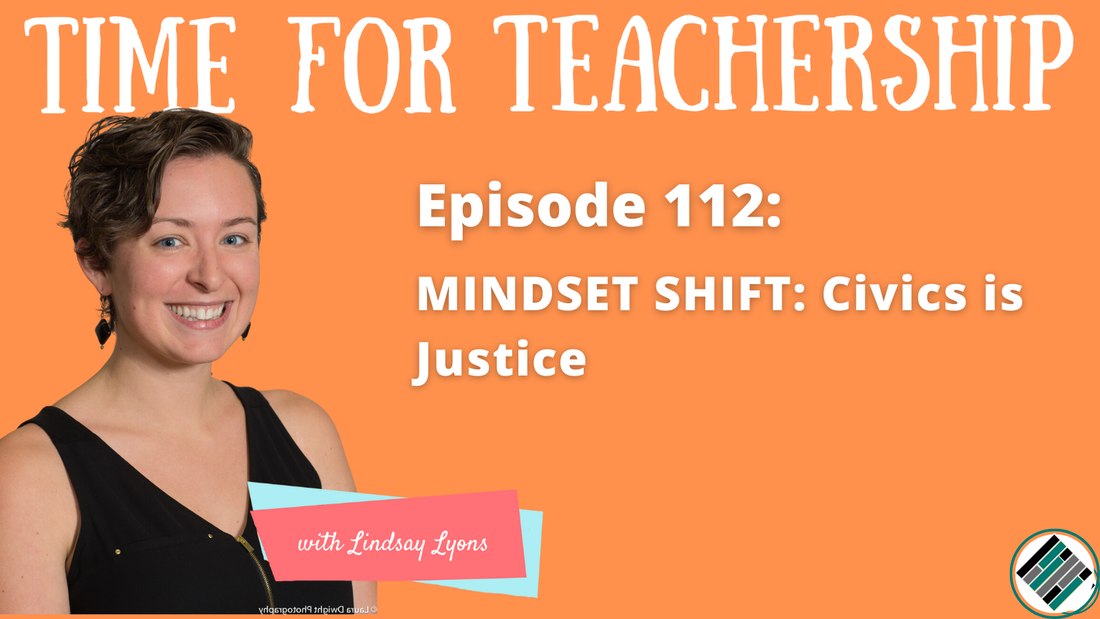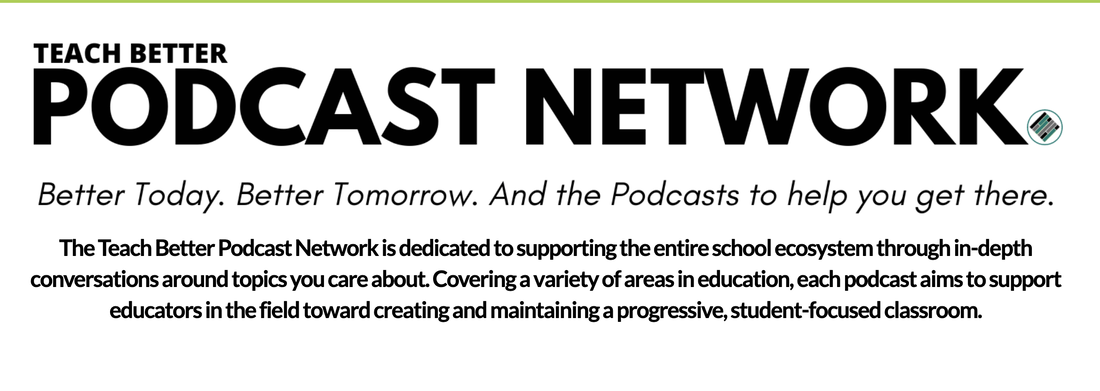|
Listen to the episode by clicking the link to your preferred podcast platform below:
In this episode, I’m thinking about the question: How can I better use a shift in language to connect with the districts, schools, instructional coaches, and teachers already doing this work? To meet the moment of new state civics requirements (which are happening in many states in the northeast—MA, NY, NJ—and I’m sure others), I want to help schools meet new state mandates and do justice-centered work! Civics is About Engagement as “Citizens” Concepts I love from the existing research… Justice-Oriented Citizens (Westheimer & Kahne, 2004) Justice-Oriented citizens “know how to examine social, political, and economic structures and explore strategies for change that address root causes of the problem”. There’s a critique of systems of oppression and action to fix them vs. “participatory citizenship” which is more volunteerism (Martell and Stevens, authors of Teaching History for Justice, say It’s the difference between holding a food drive and asking “Why are people hungry?”) Transformative Democratic Citizenship (Banks, 2017) As defined by Banks, this is “the ability to implement and promote policies, actions, and changes that are consistent with values such as human rights, social justice and equality.” Student Leadership (Lyons, Brasof, & Baron, 2020) “Students working collaboratively to affect positive change in their educational environments with support from adults and mechanisms in the school.” What is Justice (to me)? Justice allows all of us to be our full selves. It’s intersectional. There is a presence of a culture of positive peace that enables us all to thrive. Common Pitfalls We limit our work to an “add diversity and stir” approach. We get nervous about making a mistake and wait until something is perfect to act. We also view (and teach) change leadership as an individual endeavor instead of collective civic engagement. How do we support teachers to create really good Civics projects, units, and courses? Support teachers in all content areas (and in all grades) to design summative assessments that give students opportunities to apply whatever content they learned in a way that advances justice. Design PD experiences or staff meetings that enable all staff members to design civics projects that connect to their course content. How do we enable all students to practice civic engagement within our schools and districts? Meaningful opportunities for student leadership. Take a look at your school’s decision-making structures and make sure you have equitable student representation on all committees, including the leadership team. From the research: Mitra and Gross’s Student Voice Pyramid (2009) reflects three levels of student voice: listening to students, youth-adult partnership, and building capacity for student leadership. The earlier levels actually cause more turbulence than higher levels because students are invited to share concerns, but not encouraged to co-create solutions. Partnering with students and families is critical. Half measures (listening without partnering to take action) is not enough. Tips for Implementation Designing Civics Projects: Use department team meetings to align your state’s civics project standards to the department or summative assessment rubric. Help teachers and teams pick a publishing opportunity where student projects are shared. (This could be the school website or the school’s social media accounts.) Coach teachers to think about how to connect civic engagement projects to course content and also leave room for student voice. Student Leadership in Governance: Collect data on the student experience. You can do this through the SLCB Survey linked below or any of the various methods named in the book, Street Data. Invite students onto school committees. Audit these committees for representation (i.e., it’s not just one token student or all of the sports captains, students with straight A grades, or members of Student Council). Support and train students in the tools and skills they can use to be an effective representative for students. To help create space for student leadership in your school or district, I’m sharing my statistically validated Student Leadership Capacity Building survey with you for free. (Use this to measure student perceptions of leadership and civic engagement opportunities in the school!) As another resource, check out my 5-minute tutorial on How to Measure Equity and Student Voice to see how you can personalize the survey for your context. To learn more about the MA Civics Project requirements, I made this short video summary for you. And, if you’re looking for more details on the ideas in this blog post, listen to episode 112 of the Time for Teachership podcast. If you’re unable to listen or you prefer to read the full episode, you can find the transcript here. Quotes:
If you enjoyed this episode, check out my YouTube channel where I explain how to plan a lesson in 5 minutes:
0 Comments
Leave a Reply. |
Details
For transcripts of episodes (and the option to search for terms in transcripts), click here!
Time for Teachership is now a proud member of the...AuthorLindsay Lyons (she/her) is an educational justice coach who works with teachers and school leaders to inspire educational innovation for racial and gender justice, design curricula grounded in student voice, and build capacity for shared leadership. Lindsay taught in NYC public schools, holds a PhD in Leadership and Change, and is the founder of the educational blog and podcast, Time for Teachership. Archives
May 2024
Categories |


 RSS Feed
RSS Feed